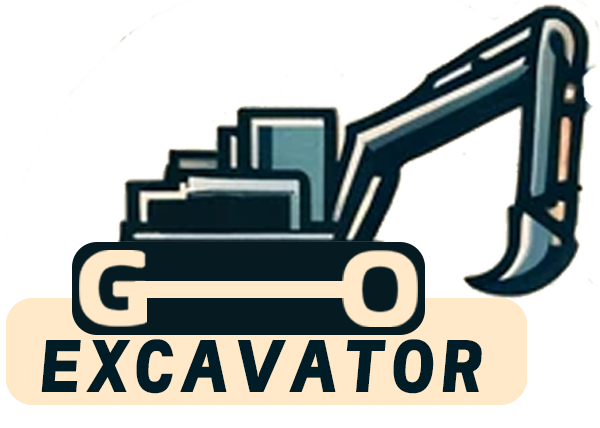
Excavator claws, known as excavator grapples or grabs, are versatile attachments designed to enhance the functionality of excavators. These attachments are widely used in various industries due to their ability to handle a wide range of materials and perform multiple tasks efficiently. This blog will explore the diverse applications of excavator claws, detailing how they contribute to construction, demolition, recycling, forestry, and other sectors.
1. Introduction to Excavator Claws
Excavator claws are specialized attachments fitted to the arms of excavators. They consist of robust, claw-like fingers that can grasp, lift, and manipulate different types of materials. The primary advantage of using excavator claws is their ability to handle bulky and irregularly shaped objects that traditional buckets and shovels cannot easily manage.
2. Construction Industry
2.1. Material Handling
In the construction industry, excavator claws are indispensable for material handling. They are used to lift and move heavy construction materials such as steel beams, concrete slabs, and large pipes. This capability significantly enhances the efficiency of construction projects by reducing the manual labor required to transport materials around the site.
2.2. Excavation and Digging
Excavator claws are also used for excavation and digging tasks. The claws can penetrate hard soil and rock, making them ideal for trenching, foundation work, and site preparation. Their ability to dig with precision ensures that construction projects proceed smoothly and according to plan.
3. Demolition Industry
3.1. Building Demolition
In the demolition industry, excavator claws play a crucial role in dismantling structures. The claws can grab and pull down walls, roofs, and other structural elements with ease. This method is not only faster but also safer compared to traditional demolition techniques, reducing the risk of accidents on site.
3.2. Debris Sorting and Removal
After demolition, there is often a large amount of debris that needs to be sorted and removed. Excavator claws excel in this task by efficiently picking up and separating different types of materials, such as concrete, wood, and metal. This process facilitates recycling and waste management efforts, contributing to a more sustainable demolition practice.
4. Recycling Industry
4.1. Scrap Handling
The recycling industry benefits greatly from the use of excavator claws, particularly in handling scrap metal. Claws can grasp and move large quantities of scrap metal, including cars, appliances, and industrial machinery. This capability streamlines the recycling process and maximizes the recovery of valuable materials.
4.2. Waste Sorting
Excavator claws are also used in waste sorting facilities to separate recyclable materials from general waste. Their precise handling allows for efficient sorting of plastics, paper, and other recyclables, ensuring that more materials are diverted from landfills and reused.

5. Forestry Industry
5.1. Log Handling
In the forestry industry, excavator claws are essential for handling logs. They can pick up and transport logs from the forest to processing areas, facilitating timber production. This task requires a high level of control and precision, which excavator claws provide, ensuring that logs are handled without causing damage.
5.2. Land Clearing
Excavator claws are also used for land clearing in forestry operations. They can uproot trees, remove stumps, and clear brush, making the land ready for replanting or other uses. This capability is particularly valuable in preparing land for agricultural or construction purposes.
6. Landscaping and Agriculture
6.1. Rock and Boulder Placement
In landscaping and agriculture, excavator claws are used to place rocks and boulders accurately. This application is crucial for creating rock gardens, retaining walls, and other landscape features. The claws’ ability to handle heavy objects with precision makes them ideal for these tasks.
6.2. Tree and Plant Handling
Excavator claws can also be used to plant and transplant trees and large plants. They can carefully dig around the root ball and lift the tree for transportation to a new location. This method reduces the risk of damaging the plant and ensures successful transplantation.
7. Mining Industry
7.1. Ore and Mineral Handling
In the mining industry, excavator claws are used to handle ore and minerals. They can load ore into trucks or onto conveyor belts for transport to processing facilities. This application requires durable and powerful claws capable of handling heavy and abrasive materials.
7.2. Site Maintenance
Excavator claws are also used for site maintenance in mining operations. They can remove debris, clear paths, and perform other tasks necessary to keep the mining site operational. Their versatility makes them an essential tool in maintaining efficiency and safety in mining environments.
Excavator claws are incredibly versatile attachments that enhance the functionality of excavators across various industries. From construction and demolition to recycling, forestry, landscaping, and mining, these claws enable efficient material handling, excavation, and sorting tasks. Their ability to handle a wide range of materials and perform multiple functions makes them indispensable tools in modern industrial operations.
A Comprehensive Guide to Buying a Excavator Second Hand
Purchasing a second-hand excavator can be a cost-effective solution for your construction or landscaping needs. However, buying used machinery comes with its own set of challenges and considerations. This comprehensive guide will walk you through [...]
Comprehensive Guide to Hyundai Mini Excavators: Features and Prices
Mini excavators have become indispensable tools in the construction and landscaping industries. Hyundai Construction Equipment, a global leader in heavy machinery, offers a range of mini excavators known for their reliability, efficiency, and advanced features. [...]
How to Extend the Service Life of Excavator Parts
Excavators are indispensable machines in the construction and mining industries. They perform heavy-duty tasks that demand robust components and meticulous maintenance. Extending the service life of excavator parts not only reduces operational costs but enhances [...]
Kymron Excavators: Innovative, Sustainable Construction Machinery
In the dynamic world of construction and heavy machinery, Kymron has emerged as a game-changer. Specializing in advanced excavator technology, Kymron is redefining industry standards with its commitment to innovation, efficiency, and sustainability. Company Overview [...]
Bulldozer vs. Wheeled Excavator: Which Machine is Better for Moving Soil?
Moving soil is a fundamental task in construction, landscaping, and earthmoving projects. Choosing the right machinery for the job can significantly impact efficiency, cost, and project timelines. Two of the most commonly used machines for [...]
Why Are Small Excavators Favored? A Comprehensive Guide
In the world of construction and landscaping, efficiency and versatility are key. Among the myriad of machinery available, small excavators have risen in popularity. But what makes them so favored? Introduction to Small Excavators Small [...]




